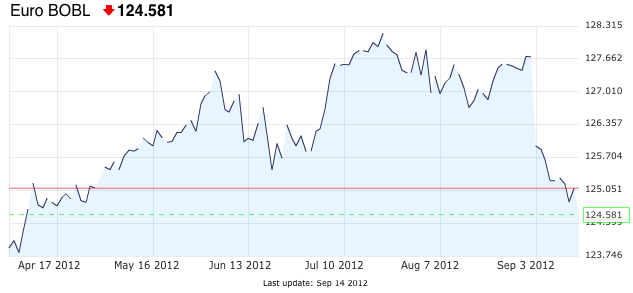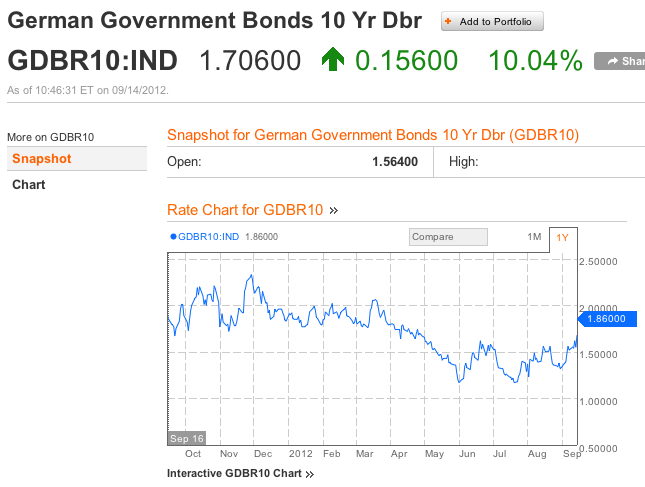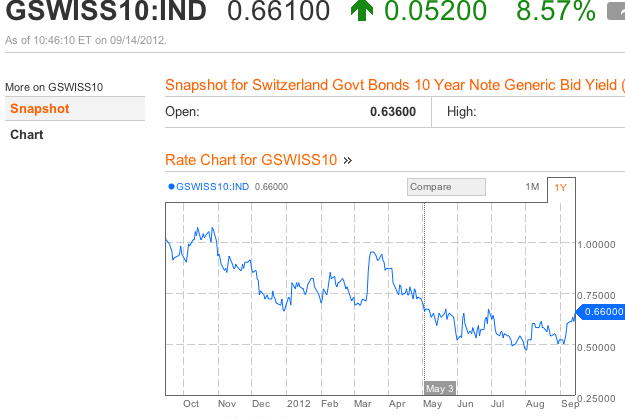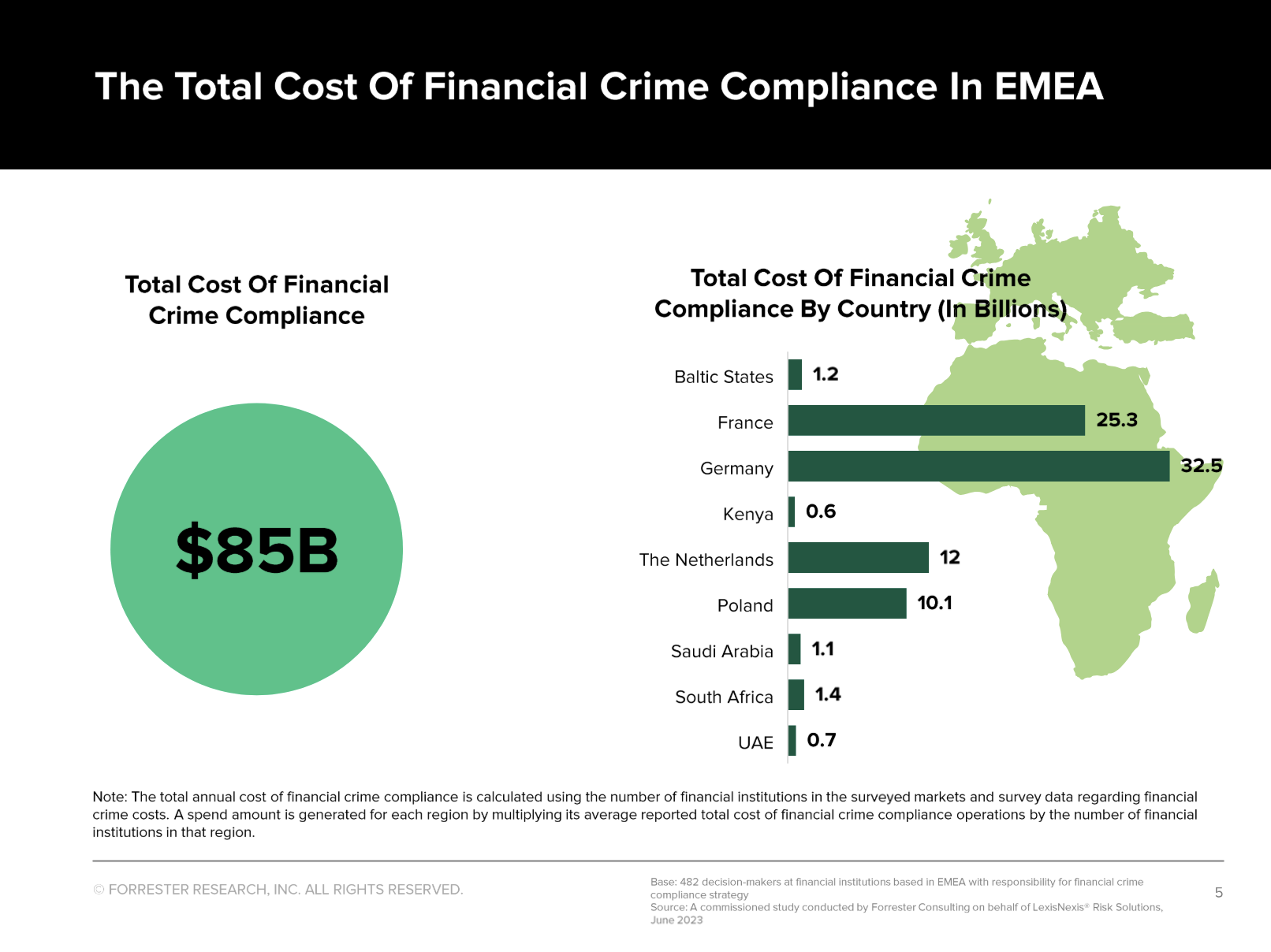German Bunds - Swiss Eidgenossen Spread over 1% again: Long-term investors piling back into Swiss franc
[StartAd] Paulsen bet already in March that Germany is willing to pay all remainders of the debt-financed 2002-2007 consumption run in the struggling European nations, even if Merkel insisted on the contrary for months. Many more hedge funds have joined Paulsen and are betting on rising German Bund yields. PIMCO has removed German Bunds from their recommended investments. Some hedge funds even expect the euro crisis to last another 20 years (as we agree in an earlier post). This would give German finances a hard life. Therefore more than half of the hedge funds expected Bund "yields to double within a year". Most recently Vontobel warned clients not to put too much emphasis on German Bunds that investors perceive still as "safe." Due to the guarantees to the ESM, the EFSF and the costs of Commerzbank bad bank, a think tank expects German debt to increase from 81% of GDP to 83% this year. This despite the low borrowing costs. It is the second institute that reduced the German growth expectations for 2013 from 2.2% to 0.8%. The result: An even higher GDP to debt ratio. [caption id="attachment_5959" align="alignright" width="330"] German BOBL Future between April and September 2012[/caption]
The first consequence of the Bund sell-off is that the yield spread between 10 yr. Eidgenossen and the German Bunds jumps over 1% again. A clear sign that some long-term investors are moving out of German Bunds not only into peripheral bonds, but also into Swiss Eidgenossen. Still at the end of July the spread was only 0.80%, at the beginning of June 0.65%. German investors fear inflation and debt (more details here).
The German BOBL Future (5 years) is falling to levels not seen since April.
Currently the Swiss 10 years Eidgenossen is trading at 0.66%. On August 30th before the recent CHF depreciation it was at 0.50% and on June 1 at 0.52%. The 10 yr. German Bund stands at 1.71% (on August 30th at 1.56%, on June 1 at 1.17%).
[caption id="attachment_5968" align="alignright" width="285"]
German BOBL Future between April and September 2012[/caption]
The first consequence of the Bund sell-off is that the yield spread between 10 yr. Eidgenossen and the German Bunds jumps over 1% again. A clear sign that some long-term investors are moving out of German Bunds not only into peripheral bonds, but also into Swiss Eidgenossen. Still at the end of July the spread was only 0.80%, at the beginning of June 0.65%. German investors fear inflation and debt (more details here).
The German BOBL Future (5 years) is falling to levels not seen since April.
Currently the Swiss 10 years Eidgenossen is trading at 0.66%. On August 30th before the recent CHF depreciation it was at 0.50% and on June 1 at 0.52%. The 10 yr. German Bund stands at 1.71% (on August 30th at 1.56%, on June 1 at 1.17%).
[caption id="attachment_5968" align="alignright" width="285"] German Bund 10 yrs Sept14 (Bloomberg)[/caption]
[caption id="attachment_5967" align="alignleft" width="285"]
German Bund 10 yrs Sept14 (Bloomberg)[/caption]
[caption id="attachment_5967" align="alignleft" width="285"] Swiss 10 yrs. Sept 14 (Bloomberg)[/caption]
The Swiss franc has lost only little 0.18% against the euro and stands at 1.2168, whereas the euro gained 1.19% against the USD at 1.3144.
[br]
Full story here
Are you the author?
Previous post
See more for
Next post
Swiss 10 yrs. Sept 14 (Bloomberg)[/caption]
The Swiss franc has lost only little 0.18% against the euro and stands at 1.2168, whereas the euro gained 1.19% against the USD at 1.3144.
[br]
Full story here
Are you the author?
Previous post
See more for
Next post
Tags: Bond yield,Bunds,EFSF,Eidgenossen,franc,German Bund,Government Bonds,Swiss National Bank,Switzerland,yields

































2 comments
StacyRichman
2012-09-18 at 07:16 (UTC 2) Link to this comment
Mr. Dorgan,
I read your comments on Eur/Chf,
I’ve recently graduated from Dartmouth College in the states and just completed a graduate degree at Columbia Univ., also in the states.
I’ve followed Fx with great interest since in secondary school.
Fundamentally, and technically – in my opinion – Central Banks have recently distorted much of what we understand to be a currency – and it’s almost priced by sentiment.
While currently, the Euro has appreciated greatly, one would expect it to pullback somewhat. However, the complexity here is that precious metal – gold – a decent indicator of price (for me) – would prove the Euro to be sustained at a high level (based on sentiment). Not a logical conclusion – but of a market one.
Would you comment.
Many thanks for your time.
Stacy
George Dorgan
2012-09-18 at 09:55 (UTC 2) Link to this comment
gold is traditionally correlated more to CHF than EUR, safe-haven flows go into Switzerland and gold. You will find it a several times on our site.
Please read this in order to get a complete picture on FX theory applied to the Swiss franc.
The main principle on long-term FX is that a currency can always appreciate, there is no limit, just a too quick appreciation is not desired. This is completely different for stocks, that must follow a long-term average, e.g. Shiller P/E.